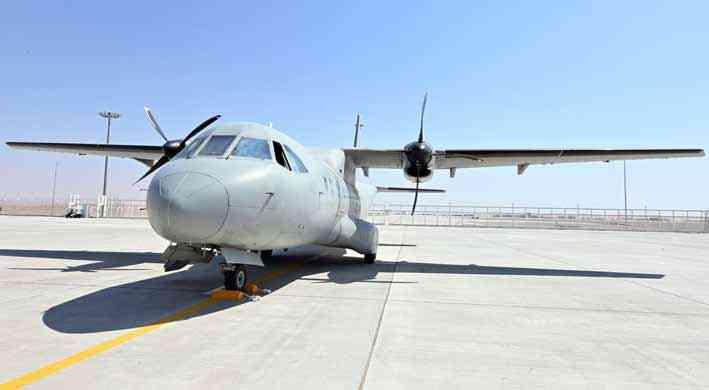
16 minute read
4IR Technology to Transform Strata
Netherlands and Estonia to Acquire seven Milrem Robotics’ THeMIS UGVs
The Estonian Centre for Defence Investment (ECDI) signed a Joint Procurement Agreement with the Dutch authorities to procure a total of seven THeMIS unmanned ground vehicles (UGVs) from Milrem Robotics, the leading developer of robotics and autonomous systems in Europe.
Advertisement
Milrem Robotics will deliver four THeMIS vehicles acquired by the Royal Netherlands Army in the coming months. The Estonian Defence Forces (EDF) will receive their three vehicles this month.
According to the contract, Milrem Robotics is the system integrator who, in addition to the supplying the vehicles, also performs under the Chairmanship of Defence Minister Rajnath Singh approved proposals for Capital acquisitions of various equipment required by the Indian Armed Forces all the integration of third-party technologies, including weapons systems, onto the delivered UGVs. Notably these unmanned weapons systems will remain under human control.
“We are pleased that the unmanned ground vehicles developed by an Estonian company in the course of a defence research and development project supported by the Estonian Ministry of Defence can now be used by our armed forces,” said Ivar Janson, Strategic Category Manager for Armoured Vehicles at the ECDI. “We are especially pleased, that we found a common ground with our Dutch partners to conduct the Joint R&D project and at an approximate cost of Rs 2,290 crore. These include procurement from domestic industry as well as foreign vendors.
Under the Buy Indian (IDDM) category, the DAC approved procurement of Static HF Tansreceiver sets and Smart procurement,” he added.
“We are delighted to enhance our cooperation with Milrem Robotics by increasing our fleet to six THeMIS vehicles in joint efforts with the Estonian Ministry of Defence. So far, the THeMIS has successfully been used for research and experiments by operational units of the 13 Light Brigade in Scotland, Germany, The Netherlands and during a live fire exercise in Austria. The addition of four extra THeMIS vehicles with a Remote Controlled Weapon System that is operated by a soldier provides us the opportunity to continue to develop concepts to enhance the combat power and decrease the risk for our soldiers,” said LtCol Martijn Hadicke, Commander of the Robot and Autonomous Systems (RAS) unit.
Milrem Robotics has already delivered two THeMIS UGVs to the RAS Unit of the 13th Light Brigade of the Royal Netherlands in 2019.
The Estonian Defence Forces used the THeMIS for 12 months in Mali during Operation Barkhane. Various EDF units have Anti Airfield Weapon (SAAW). The HF radio sets will enable seamless communication for the field units of Army and Air Force and are being procured at an approx. cost of Rs. 540 crores. The Smart Anti Airfield Weapon being procured first-hand experience with the UGV from several military exercises.
Milrem Robotics’ first product, the THeMIS UGV has been delivered to nine countries of which seven are NATO members. The company’s other products are the Type-X Robotic Combat Vehicle, intended to support mechanized units, and the Intelligent Functions Integration Kit, which enables the THeMIS but also other unmanned ground vehicles autonomous functionalities like waypoint navigation and followme. Milrem Robotics also performs system integration of capabilities such as sensors, software and sensor based intelligent functions, and weapon systems.
The company also leads iMUGS, an EDIDP funded project. This project develops the European standard architecture for unmanned ground vehicles and their management system, including cyber defence solutions, and demonstrates the advantages of unmanned systems for enhancing
DAC accords approval for arms and equipment worth Rs. 2,290 Cr.
The Defence Acquisition Council meeting held
defence capabilities at an approx. cost of Rs. 970 crores will add to the fire power of Navy and Airforce.
For the Frontline Troops of the Army the DAC also accorded approval for procurement of SIG SAUER Assault Rifles at a cost of approx. Rs.780 crore.
Strata Manufacturing (Strata), the advanced composite aero structures manufacturing company wholly owned by Mubadala Investment Company PJSC, has leveraged Fourth Industrial Revolution (4IR) technology to strengthen core manufacturing capabilities, diversify product portfolio and pivot into new areas of manufacturing.
Speaking at Global Aerospace Summit, Ismail Ali Abdulla, CEO of Strata, highlighted how the Al Ainbased company is embracing digital transformation through investments in Research & Development (R&D) and cutting-edge technologies, and building knowledge and expertise in collaboration with local universities, technology partners and OEM customers.
As a result, Strata has successfully adopted and deployed smart and additive manufacturing technologies, including robotic and automated assembly of aircraft structures, advanced thermography inspection techniques, and optimised processing and machining of composite parts.
According to Abdulla, the technology investment has not come at a human cost, with Strata’s implementation
Moving forward into the next decade, Abdulla revealed: “Strata is a beacon for the successful deployment of 4IR technologies by UAE companies, and we are playing a key role in the advancement of the national aerospace sector. Strata recognises the importance of staying ahead of the game and securing our future within the manufacturing
4IR Technology to Transform Strata
and aerospace sectors.” During the Global Aerospace Summit panel, Abdulla identified several tools redefining digital transformation in the manufacturing sector. These include robotics and automation; additive manufacturing in all forms; data analytics, artificial and adoption of 4IR and digital simulation of work solutions simultaneously environment (AR/VR/MR); ICT boosting employee connectivity solutions such productivity and optimising as Internet of Things (IoT), manufacturing operations. cloud-based processing and
“Adopting 4IR technologies data storage; as well as other in manufacturing facilities supplementary technologies is no longer a luxury but of critical importance such a necessity,” Abdulla said. as advanced materials. “Significant investments on “As with the last decade, R&D, design capabilities and technology advancements manufacturing methods is have a significant impact imperative. Companies within on manufacturing, and the aerospace industry must if adopted correctly, can collaborate with partners only positively benefit the and technology companies supply chain and process,” to enhance competitive Abdulla explained. “During advantage, and further the next 10 years, if not advance agility and ability during a shorter timeframe, to face digital disruption.” 4IR technologies will
Throughout its first decade not only revolutionise of operations, Strata has manufacturing processes enhanced its homegrown across several industries capabilities in manufacturing including aerospace, but we composite aero-structures will see further integration components to become an of traditional manufacturing increasingly competitive boundaries throughout the player in the global aerospace value chain as digital and industry and supply chain. physical worlds converge.
intelligence (AI), blockchain, Data sharing and coordination will be enhanced and will greatly influence decisions and insights, including forecasting accuracy, collaboration, and risk management. This will also support efficiencies in product handling, flow performance and cost management.”
Abdulla also revealed that Strata’s advanced manufacturing capabilities have enabled the company to seamlessly pivot into new areas of manufacturing and assist in addressing the urgent demand for Personal Protective Equipment (PPE) during the COVID-19 pandemic.
“Strata saw an opportunity to utilise our manufacturing capabilities to help protect frontline workers and support the UAE’s global fight against the virus,” Abdulla said.
By collaborating with Honeywell, a long-standing Mubadala partner, Strata built the Arabian Gulf’s first production line for the N95 mask within 30 days of initial talks. To date, Strata has surpassed the one million mask production milestone to help meet the UAE’s domestic PPE demands. It has also started shipping the masks to overseas markets including the UK and Japan.
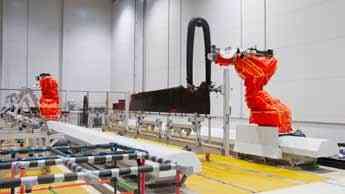

Rostec Starts Assembling Parts for the First Russian Offshore Helicopter Mi-171A3
Russian Helicopters holding company (part of Rostec State Corporation) started production of the first pre-production prototype of Mi-171A3 offshore helicopter. Flight tests of the state-of-the-art rotorcraft are to start on the summer of 2021. The first Mi-171A3 offshore helicopter is being built by several plants forming part of Russian Helicopters which specialize in serial production, and JSC “National Helicopter Center Мil&Kamov” (NHC). They are working in close cooperation.
The main task of Mi-171A3 is servicing of offshore drilling rigs of companies in the fuel and energy sector. It is capable of transporting people, freight, and carrying out search and rescue operations if necessary – for that purpose, additional installation of a special complex comprising search capabilities, on-board hoists, and medical equipment is provided for.
“Unique solutions ensuring safety of flights over water have been developed for the first offshore helicopter in Russia. The helicopter’s onboard equipment provides for navigation in high latitudes and communication with sea-going vessels. The helicopter has an emergency floatation system and life rafts, and a special crash-resistant fuselage section has been developed for it. Separate parts of the helicopter are already being assembled. The first rotorcraft for flights is to be assembled in early 2021 at Ulan-Ude Aviation Plant. Besides, in 2021 we plan to show the rotorcraft at MAKS International Aviation and Space Salon for the first time as one of the most recent key developments of Rostec,” stated Rostec Aviation Cluster Industrial Director Anatoliy Serdyukov.
After being completely assembled, the helicopter will be transferred to NHC; the National Helicopter Center will add avionics to it. After that, a cycle of ground and flight tests will take place. Other enterprises of the holding company will also take an active part in helicopter production. Kazan Helicopters will make the helicopter’s cargo floor, which has been made similar to that of Mi-38. Progress Arsenyev Aviation Company is making parts of composite materials for the nose and board panels for the middle part of the fuselage section.
“Mi-171A3 is very much sought-after for offshore operations. The rotorcraft has been created as a result of cooperation among Rostec holding companies. Expanding hydrocarbon production on the Arctic shelf requires a fleet of reliable and modern helicopters, which can be operated in the most difficult weather and climatic conditions,” emphasized Director General of Russian Helicopters holding company Andrey Boginsky. “Starting from 2022, we will be ready to hand over the first serial helicopters to the launch customer.”
Mi-171A3 is a multipurpose helicopter meeting the most modern Russian and international aviation standards, including IOGP requirements. The helicopter development started in 2018. The rotorcraft’s maximum takeoff weight is 13,000 kg. It can carry up to 24 passengers, and the maximum range is 1,000 km.
The helicopter is intended for operation in various climatic conditions, including maritime, tropical and cold climate, with ambient temperatures ranging between -50 C and +50 С. Mi-171AZ avionics will provide for automated and manual control of the helicopter at all stages of the flight, from takeoff to landing, and automatic piloting is possible for both air routes and non-regulatory airspace, irrespective of the degree of ground-based radio navigation.
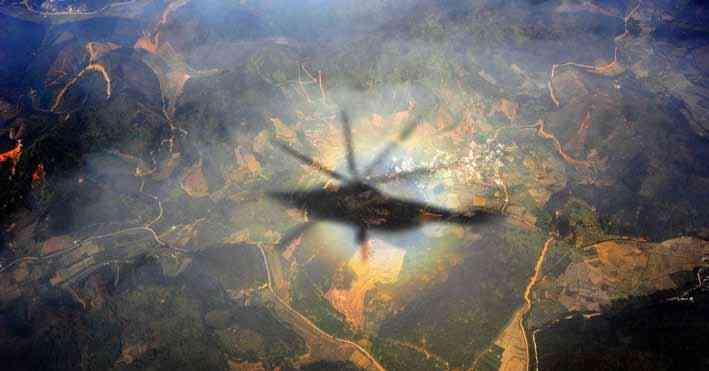
Sanad signs One Billion agreement with Pratt & Whitney and IAE
Sanad, an industry leader in aerospace engineering and leasing solutions, and a wholly owned subsidiary of Mubadala Investment Company (Mubadala), announced a new one billion dirhams deal with Pratt & Whitney and International Aero Engines (IAE). The new agreement will see Sanad Aerotech providing IAE with expanded MRO services for its V2500 engines, which powers the Airbus A320 family of aircraft.
The announcement of the new deal came during the Global Aerospace Summit in Abu Dhabi, where industry leaders convened to discuss the impact of COVID-19 on the aerospace, defence and space industries. This agreement expands the cooperation between Sanad and IAE in the field of maintenance, repair and overhaul (MRO) of aircraft engines. Under the agreement IAE, the manufacturer of V2500 engines, will offload V2500 engines for MRO services to Sanad’s state-of-the-art facility in Abu Dhabi Airports Free Zone. This step reaffirms the confidence of major global OEMs to collaborate with Abu Dhabi’s resilient aerospace sector especially during turbulent times.
Commenting on this new agreement, Mansoor Janahi, Deputy Group CEO, Sanad, said, “We are signing this new agreement at a critical stage in the history of the aviation industry. This agreement is another testament on Abu Dhabi’s established position as a reliable global centre for the aerospace industry and its state-of-the-art engineering services. With many global companies reformulating their relationships with their partners in line with the lessons learned from the pandemic, it seems that flexibility, sustainability and the capacity to deal with crises qualifies the aerospace sector in the UAE to re-enforce its position as a preferred partner for major international companies. Sanad Aerotech has demonstrated the distinction of its engineering teams that were able to meet customer needs in addition to dealing efficiently with the disruptions that resulted from the pandemic.”
Dave Emmerling, Vice President, Commercial Aftermarket at Pratt & Whitney, said, “The relationship between Pratt & Whitney, IAE and Sanad is strong and we look forward to continuing to strengthen it for years to come. We expect our V2500 customers will benefit greatly from the MRO services provided by Sanad.”
Sanad is a leading provider of aerospace engineering and leasing solutions for customers around the world, providing its services to more than 300 V2500 engines since 2012 with year-on-year growth of over 19 per cent. The V2500 engine on the popular Airbus A320 aircraft has sold over 7,000 engines worldwide and is in service with 190 leading airlines and leasing companies in every corner of the globe.
Sanad is a trusted partner of original engine manufacturers (OEMs) such as Rolls-Royce, GE Aviation, and Pratt & Whitney. These relationships have enabled it to provide competitive MRO services for various aircraft engines.
The highly reliable V2500 engine is offered through IAE International Aero Engines AG, a multinational aero engine consortium whose shareholders comprise Pratt & Whitney, a unit of Raytheon Technologies Corp and a world leader in the design, manufacture and service of aircraft and helicopter engines, and auxiliary power units, Pratt & Whitney Aero Engines International GmbH, Japanese Aero Engines Corporation and MTU Aero Engines.

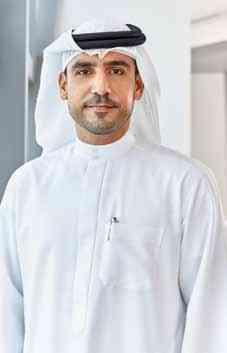
Elbit Systems UK Demonstrates Hermes 900 for the Maritime and Coastguard Agency
Hermes 900 was able to fly in unsegregated and uncontrolled airspace in full alignment with the UK Civil Aviation Authority.

Elbit Systems’ Hermes 900 Unmanned Aerial System (UAS) recently successfully completed a series of flight demonstrations for the Maritime and Coastguard Agency (MCA). The demonstrations were run by the MCA and were designed to test the capabilities of using a UAS to enhance Search and Rescue (SaR) capabilities and the use of long-range unmanned capabilities in civilian airspace.
Taking place off the West Coast of Wales over the first two weeks of September, the Hermes 900 was able to fly advanced Beyond Line of Sight (BLOS) missions into unsegregated and uncontrolled airspace, in full alignment with the UK Civil Aviation Authority (CAA). The success of these trials is a significant step forward in enhancing the capabilities of the MCA as they seek to improve the efficiency and effectiveness of its search and rescue operations while reducing the risk to MCA personnel in the field. Elbit Systems UK is closely collaborating with the UK Civil Aviation Authority, supported by additional UK companies, including Inzpire and Aviation Systems Group.
In the recent demonstration, the Hermes 900 equipped with search and rescue specific radar, an Automatic Identification System (AIS), EO/ IR payload, an Emergency PositionIndicating Radio Beacon (EPIRB) and full satellite communications, was deployed on a range of missions that simulated shore-line rescues, water rescues in dangerous air space and long-distance ship rescues which crossed international air space lines.
With a wingspan of 15m, the 1.2 ton, Hermes 900 is already deployed with more than a dozen advanced customers around the globe providing search, rescue and reconnaissance capabilities. The Company offers extended life-saving capabilities with its recently launched Hermes 900 Maritime Patrol configuration with inflated life-rafts for detection, identification and saving the lives of survivors at sea. It was revealed that this configuration was delivered to an undisclosed customer in South-East Asia.
Martin Fausset, CEO of Elbit Systems UK commented: “We are pleased to have had the opportunity to showcase our enhanced search and rescue capabilities to the MCA this week. The Hermes 900 is perfectly equipped to deal with the needs of the Maritime and Coastguard Agency and we are proud to be able to support them as they continue with their vital, life-saving work.”
Director of HM Coastguard Claire Hughes said: “We continue to do all we can to use existing technology as well as look to the future in our ongoing work of saving lives at sea. Remotely piloted aircraft continue to be a big part of that work both to potentially save lives in search and rescue and protect our beautiful coastlines from the worst effects of pollution.”
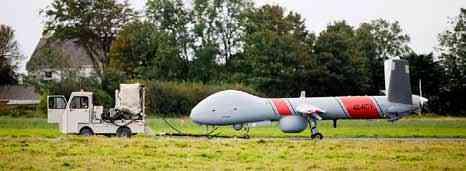
AMMROC marks first Aircraft delivery from the new Al Ain MRO facility
AMMROC, the leading provider of military maintenance, repair, and overhaul (MRO) services in the region, announced the delivery of the first C-130 aircraft from its new state-ofthe-art MRO depot in Al Ain.
The company is set to deliver nose-to-tail advanced MRO services, and holds the capability to modify and upgrade multiple aircraft types. The C-130 aircraft delivered from the Al Ain facility underwent a Programmed Depot Maintenance (PDM) to increase its capability through extending the aircraft lifecycle. This is the first of many PDMs that are scheduled to take place at this world- class facility.
With the capability to support more than 35 different aircraft types, both fixed and rotary wing, AMMROC’s facility offers one of the region’s largest military and civil MRO hangar capacities - spanning an area of 36,500 sq m. It is also the only certified Lockheed Martin Service Center for C-130 aircraft in the region, and is at the forefront of aircraft PDM and integrated fleet sustainment services in line with its wider mandate to support the UAE and other regional markets.
In March 2020, AMMROC inducted a CN235 and an A330 Multi Role Tanker Transport (MRTT) aircraft, marking the launch of the 1-square-kilometre operations facility.
Speaking on the development, Khalid Al Breiki, President of Mission Support at EDGE and Chairman of AMMROC, said: “AMMROC is leveraging its engineering excellence and cutting-edge solutions to establish new regional benchmarks for military operations. The delivery of the first C-130 aircraft from our state-of-the-art facility highlights our capacity to meet the dynamic needs of our customers as we further strengthen our credentials as an industry-leading MRO innovation hub.”
“This facility is testament to AMMROC’s vision to be the leading regional centre of excellence that provides aircraft sustainment solutions in MRO and upgrade services. Progressing on the Abu Dhabi Economic Vision 2030, we also look forward to building on our STEM initiatives and creating a highly skilled local workforce that takes the national aerospace and defence industry to new heights”, he added.
Incorporating four multi-purpose hangars, over 30 back shops and a specialised environmentally controlled strip/paint facility, AMMROC’s MRO hub is also unique in serving as a dedicated Black Hawk depot facility that provides noseto-tail MRO capabilities, inclusive of rotors and transmissions, blades, engines, components and aircraft sub-systems.
AMMROC is part of the Mission Support cluster within EDGE, the advanced technology group for defence and beyond. In July 2020, EDGE announced that it had entered into a conditional agreement to acquire the remaining 40 per cent stake in AMMROC, held by Lockheed Martin Corporation and Sikorsky, a Lockheed Martin company.
